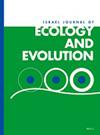热原碳提高了种植在绿色屋顶上的C3物种的生理性能
IF 0.8
4区 环境科学与生态学
Q3 ECOLOGY
引用次数: 0
摘要
利用C3生理机能的植物比适应高温和干旱体质的植物(如利用天冬酰胺酸代谢(CAM)的物种)在屋顶环境中更难以建立。在非生物和生物胁迫下,CAM物种不太容易受到浅而贫瘠的无土介质的限制。据认为,土壤改良剂可能以某种方式改善屋顶介质,使C3物种在屋顶环境中茁壮成长。虽然通常将堆肥添加到培养基中以实现这一目标,但我们假设添加人为热原碳(PyC)补充剂可以更好地吸收有机和矿物质并保持水分,从而改善C3物种的生理性能。为了验证这一点,我们种植了一种C3豆科植物,野生靛蓝(Baptisia tinctoria L R.Br)。例如,在美国马萨诸塞州的一个屋顶上,控制堆肥修正的介质和PyC修正的介质。我们发现pyc修饰的培养基有更大的平均有机和矿物质营养吸附。土壤持水能力(GWL/ψg)比对照提高16%。此外,与对照培养基相比,添加pyc的野生靛蓝光合内在水分利用效率(iWUE)显著提高了19%。我们得出结论,用PyC修正绿色屋顶培养基比堆肥修正对C3豆科植物野生靛蓝的定殖有更大的好处。我们在7年多的时间里收集的结果表明,从废物流纸板中提取的PyC可以用来改善其他豆科植物的屋顶性能,包括农作物。本文章由计算机程序翻译,如有差异,请以英文原文为准。
Pyrogenic carbon improves the physiological performance of a C3 species planted on a green roof
Plants utilizing C3 physiology have a more difficult time establishing in rooftop environments than plants with more heat and drought adapted constitutions, such as species that employ crassulacean acid metabolism (CAM). CAM species are much less susceptible to limitations of shallow, infertile soil-less media under abiotic and biotic stress. It is thought that soil amendments might improve rooftop media in a way that allows for C3 species to prosper in rooftop environments. While compost is typically added to media to achieve this goal, we hypothesized that the addition of an anthropogenic pyrogenic carbon (PyC) supplement, instead, would enable better organic and mineral sorption and water retention, resulting in improved physiological performance of C3 species. To test this, we grew a C3 legume species, wild indigo (Baptisia tinctoria L R.Br. ex), in control compost-amended media and media amended by PyC on a rooftop in Massachusetts, USA. We found PyC-amended media had greater mean organic and mineral nutrient sorption. We also found 16% greater soil water holding capacity (GWL/ψg) than control media. In addition, wild indigo photosynthetic intrinsic water use efficiency (iWUE) was significantly increased by 19% when grown in PyC-amended as compared to control media. We conclude that amending green roof media with PyC provides greater benefits than compost amendments for colonization of a C3 legume, wild indigo. Our results gathered over seven years suggest that PyC from converted waste stream cardboard could be used to improve the rooftop performance of other leguminous species, including agricultural crops.
求助全文
通过发布文献求助,成功后即可免费获取论文全文。
去求助
来源期刊

Israel Journal of Ecology & Evolution
环境科学-进化生物学
CiteScore
2.10
自引率
0.00%
发文量
7
审稿时长
>36 weeks
期刊介绍:
The Israel Journal of Ecology and Evolution includes high-quality original research and review papers that advance our knowledge and understanding of the function, diversity, abundance, distribution, and evolution of organisms. We give equal consideration to all submissions regardless of geography.
 求助内容:
求助内容: 应助结果提醒方式:
应助结果提醒方式:


